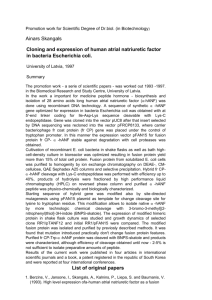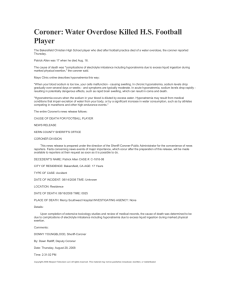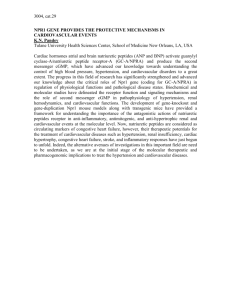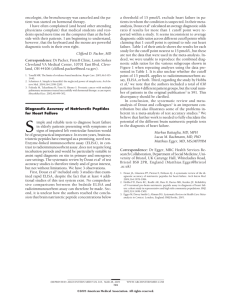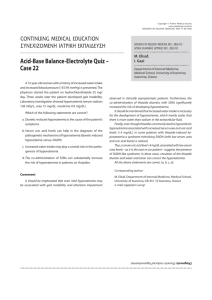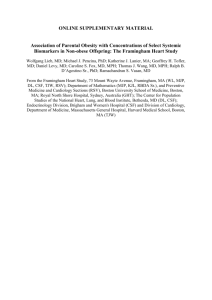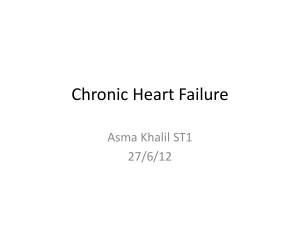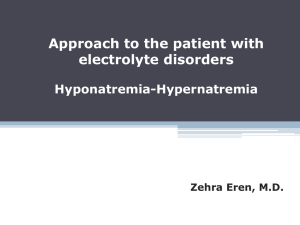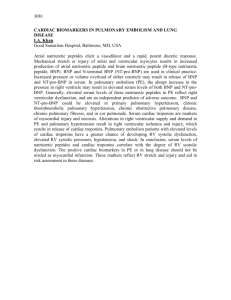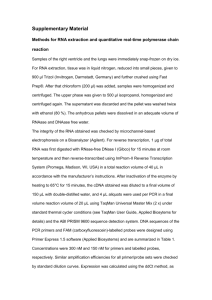Hyponatremia in neurological patients:
advertisement
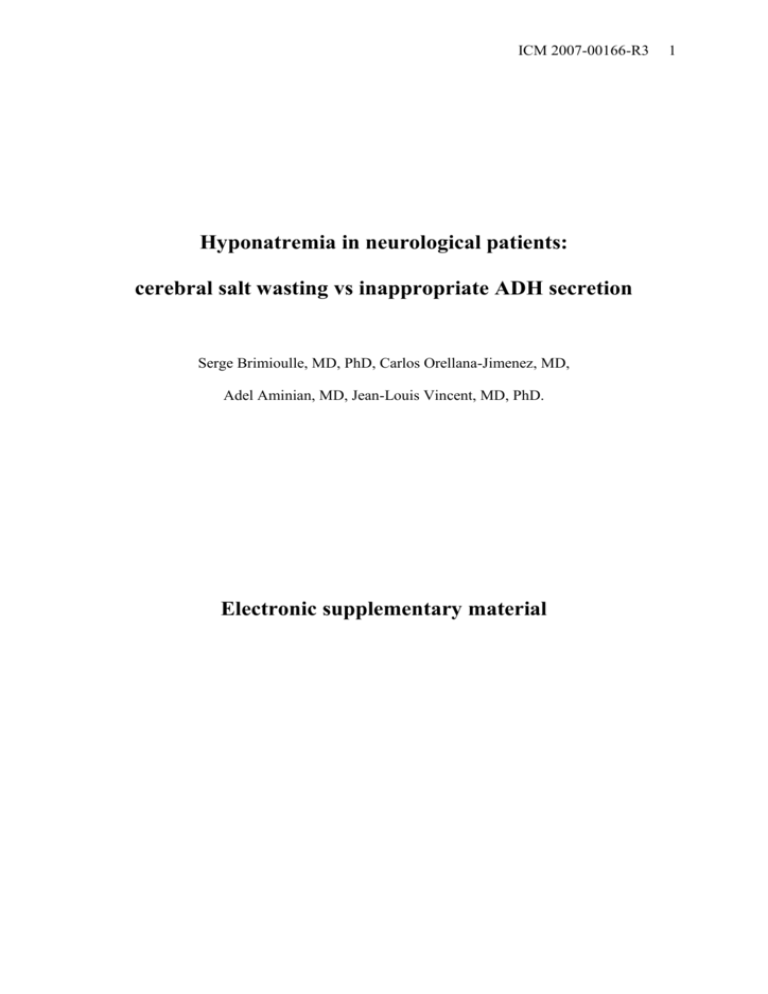
ICM 2007-00166-R3 Hyponatremia in neurological patients: cerebral salt wasting vs inappropriate ADH secretion Serge Brimioulle, MD, PhD, Carlos Orellana-Jimenez, MD, Adel Aminian, MD, Jean-Louis Vincent, MD, PhD. Electronic supplementary material 1 ICM 2007-00166-R3 2 PATIENTS AND METHODS Patients. The study proceeded between September 2000 and August 2003, and included acute neurological patients admitted in the Department of Intensive Care of the Erasme Hospital, who developed significant hypotonic hyponatremia that persisted for more than 24 h and that was consistent with SIADH (hyponatremia and hypoosmolality, inappropriately high urine sodium and osmolality, clinical euvolemia, normal thyroid and adrenal function, and absence of natriuretic drugs) [13]. Criteria for inclusion were (1) plasma sodium concentration < 130 mEq/l and serum osmolality < 270 mOsm/kg, and (2) urine sodium concentration > 20 mEq/l and urine osmolality > 200 mOsm/kg. Exclusion criteria were (1) renal failure, adrenal insufficiency, hypothyroidism, (2) liver cirrhosis, cardiac failure, overt edema, dehydration or hypovolemia, (3) recent or current steroid therapy, and (4) recent (less than 24 h) administration of diuretics, mannitol or urea. Renal failure was excluded by a creatinine clearance value > 70 ml/min, adrenal insufficiency by a serum cortisol level > 70 ng/ml, and hypothyroidism by a serum TSH level between 0.4 and 4 UI/ml. Liver cirrhosis was ruled out by the absence of suggesting medical history, physical examination, biology or imaging. Overt edema or dehydration were excluded by physical examination. Hypovolemia was excluded by the appropriate blood pressure, heart rate and diuresis values before and during the study, and by their absence of change with saline administration. Laboratory measurements. Data collected on the day of investigation included the results of routine blood and urine analyses, and the clinical and biological variables needed to verify SIADH criteria [4]. Electrolytes and osmolalities were measured using routine laboratory techniques. Blood volume was measured as recommended by the International Council for Standardization in Haematology [14]. Briefly, 26 ml of blood were withdrawn and mixed to 4 ml of acid-citrate-dextrose (ACD) solution. The plasma fraction was removed after 5 min centrifugation. The RBC were incubated for 30 min with 50 Ci of the 51-chrome solution, and added to a syringe with 20 ml saline. RBC were reinjected into the patient, and blood was withdrawn 15 min later for hematocrit and isotopic measurements. Blood, plasma and RBC volumes were expressed with reference to actual body weight. ICM 2007-00166-R3 3 DISCUSSION Natriuretic factors. Increased levels of a natriuretic factor are generally proposed to explain the development of CSWS [11]. Despite many investigations, however, the evidence of a causal relationship between brain injury, natriuretic factors, salt wasting and hyponatremia is still lacking. Atrial natriuretic peptide (ANP) levels are increased in many critically ill patients. The positive correlation between ANP and serum sodium or central venous pressure suggests that ANP release is a response to hypervolemia rather than a cause of hypovolemia [26]. Brain natriuretic peptide (BNP) levels are increased in many patients, especially those with acute cardiac disease, and are not associated with hyponatremia [26]. C-type natriuretic peptide (CNP) has poor natriuretic activity. The mere presence of a natriuretic factor can thus not be accepted as an indicator of salt wasting or a cause of hyponatremia. Limitations. The number of patients might have been insufficient to detect a small subgroup of patients with low blood volume suggesting CSWS. However, no hyponatremic patient had a blood volume below normal, as defined from control patients. As 5 % of normal patients are expected to stay outside the normal range, a very large number of patients would be needed to confirm the existence of a subgroup of patients with low blood volume (assuming that such a subgroup does exist). Meanwhile, included hyponatremic patients would not be treated with urea or vasopressin antagonists until completion of the study, although these treatments can increase natremia and possibly improve the neurological status. In the presence of clearcut results, the study was thus discontinued for ethical reasons. On the other hand, we possibly excluded potential CSWS patients who were hypovolemic and whose hyponatremia resolved after saline administration. Such exclusions would have been appropriate, because such patients do not fulfill criteria for SIADH, and because they deserve treatment with fluids and sodium whatever the underlying diagnosis. REFERENCES 26. Berendes E, Van Aken H, Raufhake C, Schmidt C, Assmann G, Walter M (2001) Differential secretion of atrial and brain natriuretic peptide in critically ill patients. Anesth Analg 93:676-682
